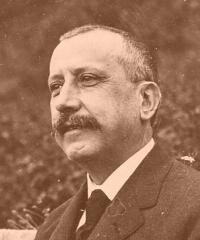|
Joan Rubió
Joan Rubió y Bellver (Catalan pronunciation: [ʒuˈan ruβiˈo]; 24 April 1870 – 30 November 1952) was a Spanish architect famous for his contributions to the Catalan Modernista movement. BiographyEarly life, familyRubió was born in Reus, Province of Tarragona. He was also the brother of the military engineer Marià Rubió i Bellver and uncle of the architect Nicolau Maria Rubió i Tudurí and the engineer Santiago Rubió i Tudurí. Design careerA keen disciple of Antoni Gaudí, he collaborated with him until 1905, on such works as La Sagrada Família, the Casa Batlló, the Casa Calvet, the Torre Bellesguard and Parc Güell in Barcelona, the restoration of La Seu (the cathedral of Palma de Mallorca), and the Colònia Güell (factory town) in Santa Coloma de Cervelló, where Rubió built the agricultural cooperativa building with Francesc Berenguer in 1900, along with two private homes: Ca l'Ordal (1894) and Ca l'Espinal (1900). When designing houses the architect had a prevalence for bow window on the corners of his designs. Rubió was also a regidor (councillor) on the Barcelona City Council (Ajuntament de Barcelona, 1905) and was appointed an architect for the Province of Barcelona (1906-1943) by the Barcelona Provincial Council (Diputació de Barcelona). His architecture is also prevalent on the Balearic Islands, for example in the northern town of Sóller, on Mallorca, where he designed the façade of the Church of Sant Bartomeu (1904) as well as the Banco de Sóller (1912), remarkable for its intricate ironwork (wrought iron). Notable works and collaborations Many of the following works are collaborations with Antoni Gaudí.
Gallery
References
External linksWikimedia Commons has media related to Joan Rubió i Bellver. |
||||||||||||||||||||
Portal di Ensiklopedia Dunia





